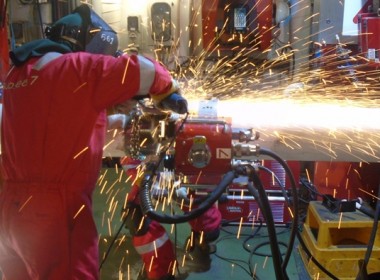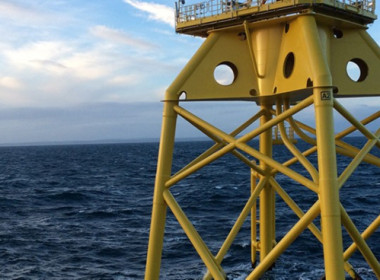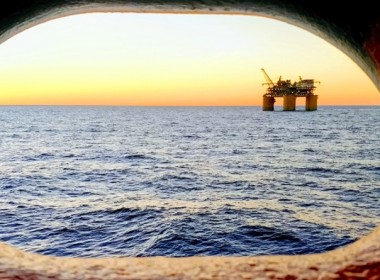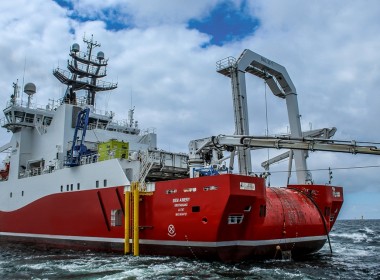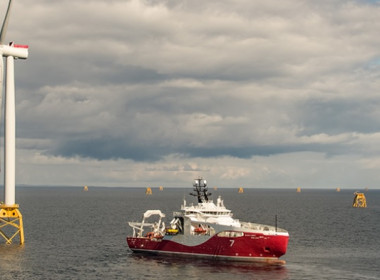COLUMN | Quick updates: PSVs changing hands; subsea newbuilds; Guyana booming; rigs fixing higher [Offshore Accounts]

Money is being made in offshore once again, but tragically lives are also being lost unnecessarily.
Earlier this week, we examined how Perenco’s dysfunctional safety culture in Gabon, leading to six people dead or lost in an explosion. This is a sad backdrop for an industry booming at last.
Stop the press: Cyan strikes
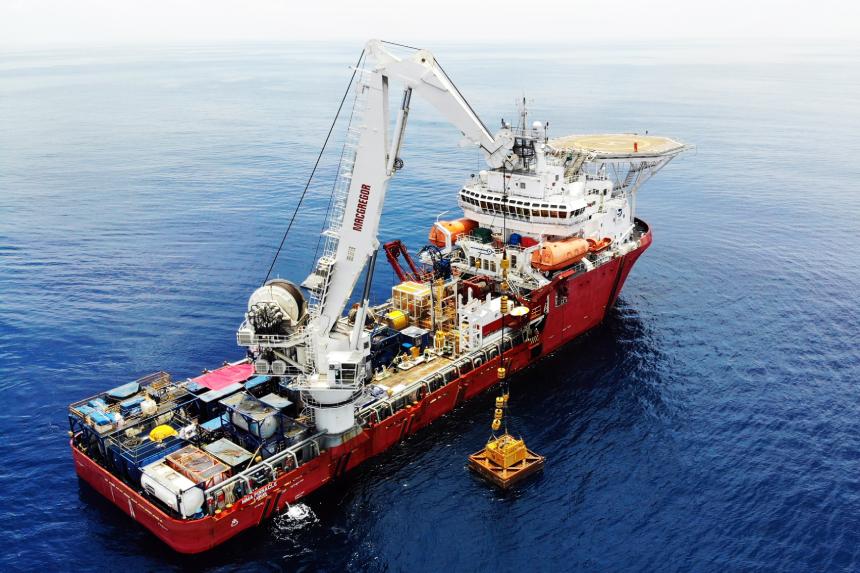
No sooner had we sent this Quick Updates copy to the editor than surprising news hit our inbox: Singapore’s green private equity house Cyan, supposedly focused on “green technology,” has made an offer for MMA Offshore.
This is surprising in a number of ways. Around 25 per cent of MMA’s revenues comes from renewables, primarily from vessel operations in Taiwan and survey work in the North Sea. But that still leaves around 51 per cent of the company’s revenue coming from oil and gas operations and 14 per cent from decommissioning, er, oil and gas installations, with the remaining ten per cent from the Australian government and the defence sector (not known for its green-ness, either).
Half the company’s revenue is from Australia and half is from the rest of the world.
Billion Aussie dollar price tag
As MMA is a publicly listed company, the acquisition price has not been a mystery. The company has shrunk to survive but now finds itself with a modern fleet of 18 owned and two bareboated, mostly high-specification vessels, trading mainly in South-East Asia and its Australian heartland.
The MMA fleet includes the successful subsea vessels MMA Pinnacle and MMA Prestige as well as anchor handlers and supply vessels. The company is almost debt-free.
Critically, MMA has a Taiwanese entity that could provide management and local crew to Cyan’s recent newbuild service operations vessel ordered in Vietnam at Vard against a long-term charter in Taiwan. Cyan is buying a platform, expertise, and track record with MMA.
Cyan is offering approximately AU$1.03 billion (US$673 million) for the company, and the amount represents a modest 11 per cent premium to the closing price of MMA shares on March 22. Cyan says that it is a 31 per cent premium on the 90-day average price of the shares and a 91 per cent premium to the company’s net tangible assets at December 31, 2023, when it last reported its balance sheet.
This reflects more on the beaten down values of the fleet after years of recession and on the sharp rebound in asset prices over the last two years. At over seven times the value of the annualised free cash flow from the last six calendar months of 2023, it is not unreasonable, and the board of MMA has recommended acceptance to shareholders.
We will look at the deal and the context in a future piece. Cyan appears to have a random approach to acquisitions, and an incoherent strategy.
We’ll leave it at that for now. Email the editor if you disagree.
PSVs are starting to move
Two weeks ago, we looked at Boskalis, a company that made six times the profit of Tidewater in 2023 and is busy investing – in long-distance towage company ALP Maritime and in a new build 31,000-cubic-metre capacity trailing suction hopper dredger (TSHD) ordered at sister company Royal IHC in the Netherlands. Boskalis is also rumoured to be buying a modern DP2 platform supply vessel (PSV) with large accommodation for remotely operated vehicle (ROV) work, but no deal has yet been announced by the Dutch offshore heavyweight.
And it is not just Boskalis that is doing deals. This week we review the recent sales and orders.
Standard finally sells Supplier
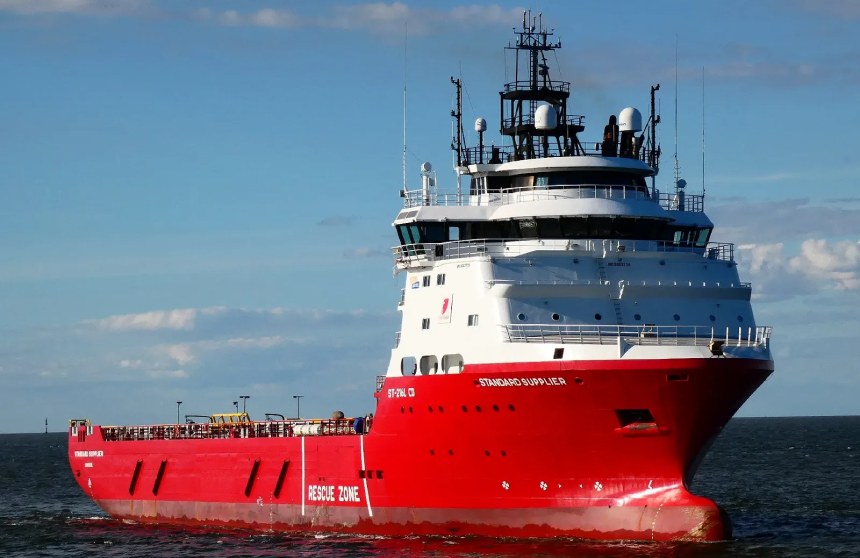
On a positive note, we have two PSVs changing hands in the North Sea without the buyers being named, and a third ship on the block.
Standard Supply finally managed to sell the 5,100DWT, DP2 PSV Standard Supplier (built in 2008) following cancellation of the vessel’s sale to Evangelos Marinakis’ Capital Offshore in January, due to protracted repairs on its azimuth thruster. Standard got the ship back in service in late January, but by then the Greeks had terminated the sale.
Last week, Standard announced a new buyer had emerged, paying US$22.7 million for the ship, with closing due in April.
As we reported in February, Standard Supplier is chartered to BP UK at a day rate of around US$23,500 up to June 2024, with options for another three months, reflecting the extended breakdown time. Hence, the buyer gets confirmed charter revenue, and Standard must be hoping that this time, the ship doesn’t suffer another technical misfortune.
Island Dragon changes hands
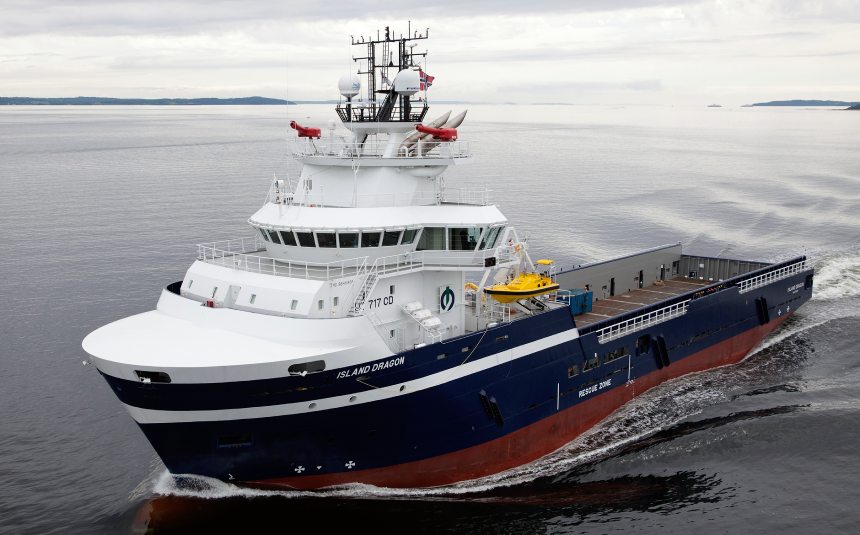
Also sold was the UT717 design DP2 PSV Island Dragon in Aberdeen. It is a clean design vessel built in 2014 with 800 square metres of clear deck and 3,800 DWT.
The ship was apparently sold by Island for over US$25.8 million, having passed its second special survey. The North Sea spot market’s lacklustre performance has continued through the month, but this is not deterring speculators.
Last week saw the UT776 design, 1,000-square-metre clear deck PSV Island Condor fixing in Norway to Aker BP for just NOK80,000 (US$7,400) and the UT755 design Spirit of Emden fixing in the UK to Ineos for €10,000 (US$10,800) for supply runs last week. As winter passes, owners are looking to see rates quadruple over the next few months of better weather and increased construction activity.
Arctic Pearl swapping scallops for supply runs?
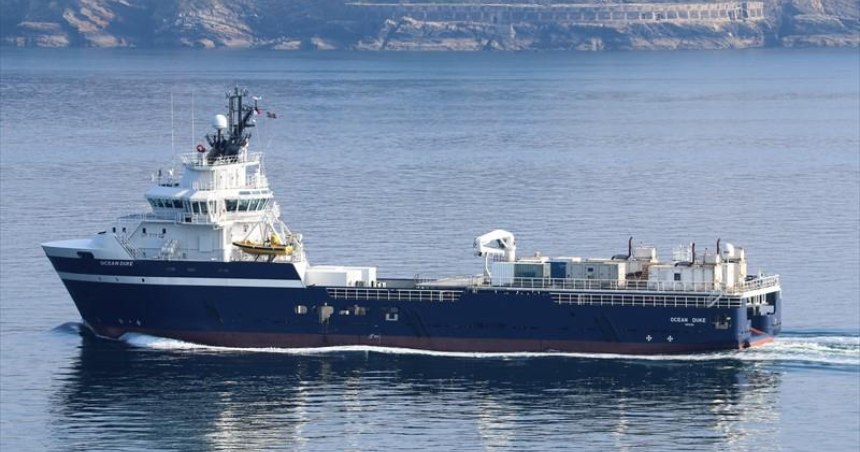
As investors and owners look forward to a glorious summer of money-making and vessel shortages, the sister to Island Dragon, the 2013-built UT717 design Arctic Pearl, is rumoured to be in the process of sale for conversion in Norway back to a PSV from its current scallop gathering role. When the market was flat, vessels left the offshore fleet; now that vessel values have doubled in just two years, they are coming back.
The return is an uncomfortable reminder to Standard Supply’s shareholders that in 2021, the company sold the 2014-built, 800-square-metre clear deck DP2 PSV Standard Olympus for just US$7.5 million to a buyer in the salmon industry. Will she also return?
As yet, the only newbuilding orders for PSVs are from Hercules Supply at Fujian Southeast Shipyard in China, with their 1,000-square-metre clear deck Breeze Ship Design Z4423 units fitted with battery hybrid propulsion, a moonpool, and accommodations for 60 people. The first of these is scheduled for delivery in the fourth quarter of 2025.
But it can’t be long before others follow in the PSV space, as the subsea newbuild market is accelerating. Once one order is placed, it is a sign that the business case is compelling.
Seatankers and Rem Offshore follow Agalas and Eidesvik
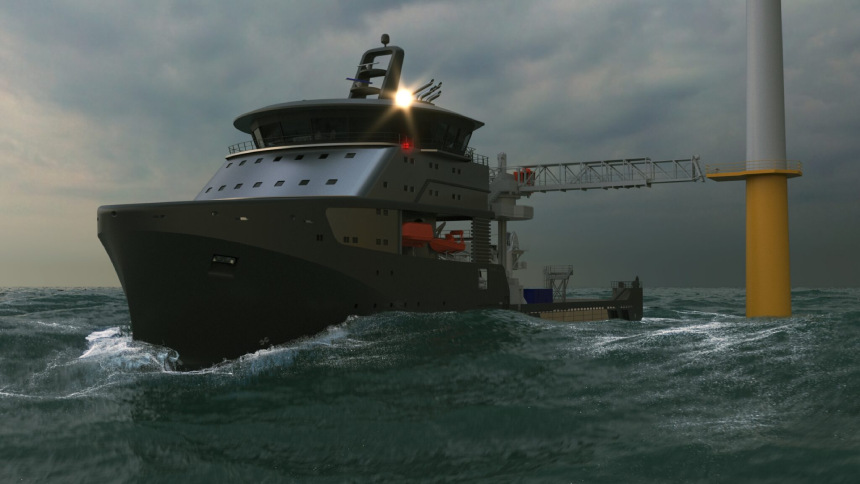
Last year, Agalas and Eidesvik Offshore announced a joint venture to own and operate the first new subsea vessel in nearly a decade, a €81.5 million (US$88 million) ship under construction at Sefine Shipyard in Turkey. The new vessel will measure 99.9 by 21 metres wide and will feature a 150-tonne active heave compensated (AHC) crane and 900 square metres of deck space.
The vessel will be the world’s first to be delivered with both a hybrid battery system and dual-fuel engines capable of running on both methanol and diesel. Agalas and Eidesvik say that this can reduce emissions by 70 per cent compared to equivalent diesel-mechanical ships.
Upon delivery in early 2026, the newbuild will enter into a contract for a minimum of three years firm with the publicly listed ROV and survey player Reach Subsea.
Now Seatankers has added orders to boost investor interest in the segment.
Seatankers getting salty in China
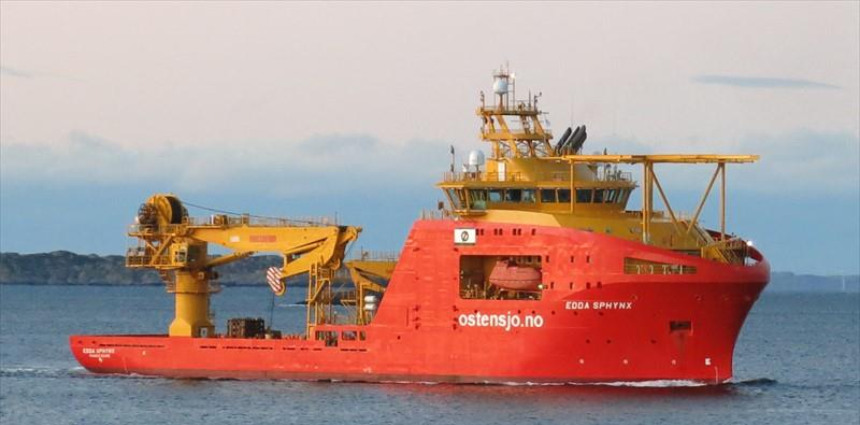
Late in 2022, John Fredriksen’s Seatankers snapped up two abandoned Toisa newbuild subsea vessels which were built by the Wuchang Shipbuilding Industry Group in Qingdao, China before Toisa went spectacularly bust in 2018. The two 97-metre-long, Salt Ship Design vessels with 150-tonne AHC cranes ended up being delivered in 2021 and operated in China by Chinese state companies until Seatankers rescued the orphans.
Mr Fredriksen promptly bought the duo, placed them under the management of to Østensjø Rederi – which manages the Edda fleet – and renamed them Edda Sphynx and Edda Savanah. They mobilised to the North Sea, and James Fisher promptly chartered Edda Savanah, which has subsequently moved off to Nigeria, according to AIS data.
Seatankers was obviously pleased with the performance of the pair, because last week, Salt Ship Design announced that a customer (which we can report is Seatankers) has ordered two offshore construction vessels with an option for two more, again at Wuchang. The designers reported that the new orders are a further development of the Salt 305 design Edda Sphynx and Edda Savanah.
The new Salt 0494 design vessels are prepared for alternative fuel, and a large battery pack will be included. No details on crane size, ship specifications or dimensions have been released yet.
But subsea orders are like buses. You wait years, and suddenly three come along all at once.
Rem Offshore goes local with Myklebust
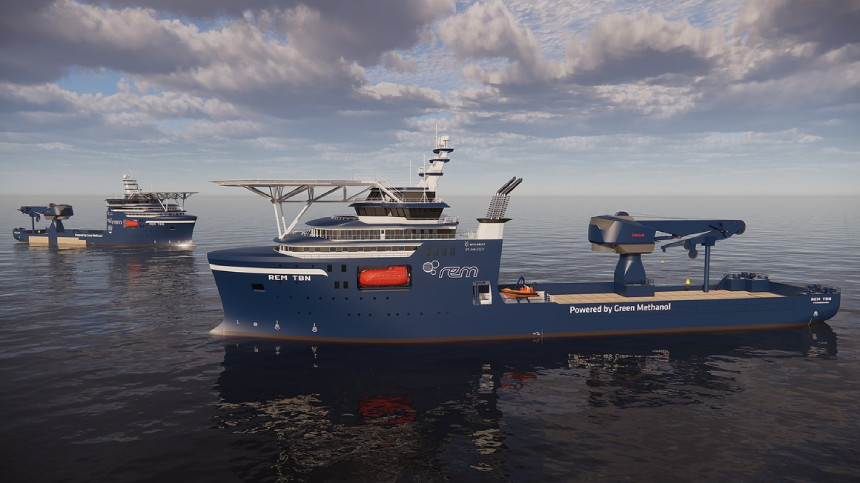
On Friday, a third vessel was added to the subsea order book. Rem Offshore and Myklebust Verft announced that they had signed a contract for the construction of a subsea OCV with a 250-tonne AHC crane. The vessel will be delivered in 2026 and will be the first of its kind that can perform heavy construction work in both offshore wind and subsea with net zero emissions, the companies say. The contract also contains an option to build one more vessel.
The vessel is designed by Norway’s Skipsteknisk. Rem and Myklebust claim that the design “uses a number of solutions where energy consumption is almost halved compared to comparable tonnage in today’s market, as well as meeting future requirements for zero emissions from end to end.”
The OCV will be equipped with dual-fuel methanol engines in combination with battery packs. All the offshore lifting equipment, including the 250-tonne crane, is electric and regenerates power to the batteries. The working deck is over 1,400 square metres in area, and the ship is also prepared for the installation of an offshore gangway for use in offshore wind.
We are interested to see this “dual-use” concept of vessels that can work in both offshore oil and gas and offshore wind once again gaining traction. As we reported, Dong Fang Offshore in Taiwan took the OCV Seabed Constructor, which also has a 250-tonne AHC crane, from the enervated hands of Swire Pacific Offshore in 2021 and traded it in the wind market very successfully in East Asia.
Guyana’s good news as Lancetfish reels in 730 million barrels
Further demonstrations of the strength of the deepwater market emerged over the last few weeks.
ExxonMobil announced yet another massive discovery off Guyana. ExxonMobil and its partners believe that their prolific deepwater Stabroek block contains eleven billion barrels of recoverable oil.
By 2027, ExxonMobil will have six floating production systems online there, likely producing over one million barrels a day, up from today’s 600,000 barrels per day of production on Stabroek from three floating production, storage, and offloading vessels (FPSOs).
Now a new discovery called Lancetfish has been announced, and it contains recoverable reserves estimated at 730 million barrels, according to the local press in Georgetown. It is likely that lancetfish and the neighbouring Fangtooth discovery could be approved as the seventh FPSO development off Guyana.
No wonder ExxonMobil and its partner CNOOC are going to arbitration to fight to buy Hess’s share of Stabroek, rather than Chevron. Perhaps Ariana Grande’s We Can’t Be Friends – the current UK number two track – is an anthem for this multi-billion dollar bust-up between the partners?
Noble’s Philippines fixture reiterates rig strength
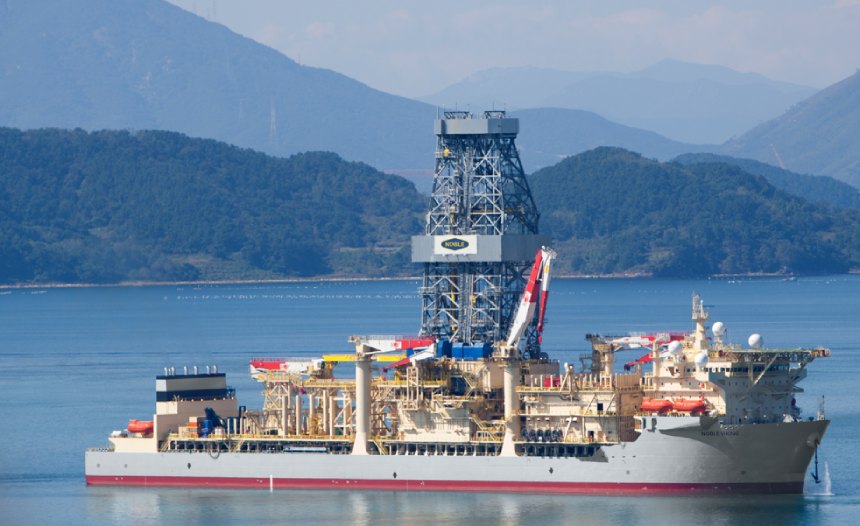
But it is not just Guyana that needs deepwater rigs, nor is it Namibia, where Portuguese operator Galp Energia just announced a second successful exploration well in the deepwater Orange Basin, which was drilled by the Odfjell-managed semisub Hercules supported by one of Seatankers’ PSVs and a Seacor ship.
Rig owner Noble Corp’s announcement on social media earlier in the month that it has fixed the drillship Noble Viking for a three-well campaign on the Malampaya gas condensate field offshore the western Philippines showed the bull case for the deepwater drillers.
Prime Energy Resources Development will charter the rig in the second quarter of 2025 for a 140 days’ firm contract with a value of US$69.9 million, meaning Noble has scored a day rate of US$499,000 for the rig. Even better, there is also a one-well 20-day option valued at about US$549,000 per day, excluding additional fees for managed pressure drilling services, mobilisation, and demobilisation fees.
These kind of rates in deepwater had been achieved for a single well before, off Canada (Hercules) and off Guinea-Bissau (Ocean BlackRhino), but Noble’s three-well programme confirms that half a million dollars is the new benchmark in this cycle – similar to rates achieved in the last boom of 2011 to 2014.
Conclusion: still moving onwards and upwards
Noble’s fixture and the huge discoveries by Galp and ExxonMobil reinforce the optimism that underpins the offshore industry. Cyan stands to benefit from MMA as a platform both to exploit the rising oil and gas market and to play the fast-growing Asian and Australian offshore renewables sector.
Like Rem’s newbuilding order, Cyan’s purchase shows how owners can combine flexibility in orders to work on both fossil fuel and wind projects.
Few are better at spotting big cycle shipping trends than John Fredriksen. He has just made the largest subsea vessel order in a decade; you’d be a fool to bet against him now. Cyan’s acquisition only reinforces the sense of optimism about subsea.
Further reading
All you need to know about MMA and its fleet of 20 ships is here on the company’s recent investor presentation.


